Construction materials science. Рубрика в журнале - Nanotechnologies in Construction: A Scientific Internet-Journal
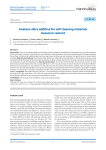
Anatase-silica additive for self-cleaning materials based on cement
Статья научная
Introduction. The cost of anatase additives to concrete can be lowered by synthesizing it and applying it to a mineral substrate that is active against cement. In particular, the use of anatase in mineral powders such as silica shows promise. This paper describes the synthesis of anatase-silica photocatalysts with varying anatase to silica ratios and evaluates their performance in cement-based materials. Materials and methods. The photocatalytic additive was obtained by TiO2 deposition on the microsilica substrate using sol-gel technology. The physicochemical studies included X-ray phase analysis and electron scanning microscopy. To determine the self-cleaning, we used the rhodamine test. Results and discussion. An increase in the TiO2/SiO2 ratio increases the area covered with anatase and the height of the main anatase reflections in the X-ray phase analysis. But the increase in the anatase reflection intensity is not proportional to the change in the TiO2/SiO2 ratio with the same size of anatase crystallites. With an increase in TiO2 relative to SiO2, the self-cleaning efficiency increases and reaches the required level when the ratio of oxides in the additive is slightly less than 1:1. It means that 1 g of TiO2 is enough per specific surface area of the substrate 22 m2 to create an effective photocatalytic additive. Conclusion. The optimal TiO2/SiO2 ratio of 1:1 was revealed by varying the amount of anatase relative to the substrate in the range of TiO2/SiO2 ratios from 1:2 to 1:0.5. The results can be used in the production of technically and economically effective photocatalytic additives for self-cleaning materials based on cement.
Бесплатно
Anti-icing coating based on silicone resin SILRES® MSE100
Статья научная
Introduction. The study is aimed at obtaining an anti-icing coating for building structures by creating a hydrophobic surface layer, which is regulated by surface energy and surface topography. Materials and methods. Acrylic resins A-01 and DEGALAN®, high-chlorinated polyethylene resin HCPE and silicone resin SILRES® MSE 100 were used in the research. Aerosil R 972 nanoparticles were used as a filler. The anti-icing properties of the coating were evaluated by the contact angle of the water drop with the coating, the static and dynamic contact angle, the wetting hysteresis, and the adhesion of ice to the superhydrophobic surface. Results and discussions. We have found that coatings based on acrylic resins A-01, DEGALAN®, high chlorinated polyethylene resin HCPE and silicone resin SILRES® MSE100 20% concentration do not provide superhydrophobic properties. The superhydrophobic effect is retained by coatings based on SILRES® MSE100 silicone resin 5% and 10% concentration. The force of detachment of a drop from a coating based on SILRES® MSE100 silicone resin at a 10% concentration is 3 times less, which ensures an easier rolling of a water drop from the surface and its anti-icing properties. The amount of ice on an untreated surface is 0.59 kg/m2, and on a surface treated with a composition based on SILRES® MSE100 silicone resin, it is 0.15 kg/m2. Conclusions. An anti-icing coating composition based on SILRES® MSE100 silicone resin has been developed. The proposed composition forms a coating characterized by anti-icing properties that remain in operation.
Бесплатно
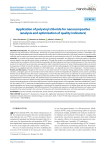
Статья научная
Introduction. The application of nanocomposites in various industries has increased in recent years due to their unique properties and performance characteristics. Enhancing the quality performance of nanocomposites presents a formidable challenge, primarily attributable to the intricate interactions among their constituent elements. This paper presents an overview of the methods used to analyze and calculate the quality performance of nanocomposites using PVC as the base material. Methods and materials. To calculate technological parameters that are not directly measurable, we conducted a thorough analysis of literature sources related to the specific process under consideration. Through this analysis, we established appropriate relationships between empirical data in accordance with the fundamental principles of thermodynamics and mass transfer processes. In the course of the research, the method of neural networks was applied in order to describe the process of vinyl chloride polymerization carried out by suspension method. To solve this problem, a cascade network with forward propagation of the signal and backward propagation of the error was applied. Network composition: in the hidden layer – ten sigmoid neurons, in the output layer – two linear neurons. Results and Discussion. Throughout this research, it was observed that the heat flux during polymerization exhibits temporal variation, contingent upon the concentration level of the initiator. Further the dependencies obtained can be used in controlling the flow rate of refrigerant into the reactor cooling jacket, to ensure that the entire process is isothermal. It was found that by varying the stirrer speed, it is possible to change the particle size and hence the molecular weight distribution of polyvinyl chloride. The developed neural network was tested. The obtained results have minimal error and are close to the real values, from which we can conclude that the network is trained correctly and the dependence between the data is found. Conclusion. Dependencies linking physicochemical parameters of the technological process with the design features of the apparatus have been established. To maintain the quality of PVC, in particular the appropriate molecular weight distribution, a neural network (a cascade network with direct signal propagation and reverse error propagation, consisting of ten sigmoidal neurons in the hidden layer and two linear neurons in the output layer) was developed in MATLAB environment. The network was trained on a sample and tested on test values, which showed that the network predicts the outcome of the process with minimal tolerable error, with other parameters unchanged.
Бесплатно
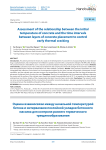
Статья научная
Introduction. This article presents the results of a study on the development of a concrete mix incorporating fly ash, blast furnace slag, a superplasticizer, and a temperature-rise inhibitor to produce concrete with a compressive strength of 60 MPa after 28 days. The concrete mixture is intended for use in a massive concrete foundation measuring 4 meters by 4 meters by 4 meters. Methods and materials. Laboratory tests were conducted to determine the compressive and tensile strength of the concrete. Additionally, tests were performed to evaluate the temperature rise under adiabatic conditions. Results. Using numerical simulation, the study investigated the influence of two factors on the temperature regime for the given concrete composition, Vietnamese climatic conditions, and the selected mass concrete structure: the temperature of the placed concrete and the time interval between the placement of adjacent blocks forming the mass. Discussion. Based on the requirement that the temperature difference between the center and the surface of the concrete mass should not exceed the permissible limit of 20 °C, an equation has been derived relating these two factors. Graphs of the corresponding functions have also been constructed. Conclusion. The research results can serve as practical guidelines for the construction of monolithic concrete foundations, helping to minimize the risk of thermal cracking and ensure the durability and quality of the structure.
Бесплатно
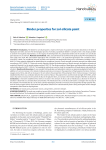
Binder properties for zol-silicate paint
Статья научная
Introduction. The binder for sol-silicate paints is made on the basis of a polysilicate solution obtained on the basis of liquid glass and silicic acid sol. The technological process of creating a polysilicate binder is complex and it is not always possible to achieve the required characteristics. In this regard, the development of a polysilicate binder and the creation of a sol-silicate paint based on it are relevant. Materials and methods. Silicic acid sols Nanosil 20 and Nanosil 30 produced by PK Promsteklotsentr were used in the work. We used sodium liquid glass with a modulus of M = 2.78, potassium liquid glass with a modulus of M = 3.29 (GOST 13078). The conditional viscosity of paints and varnishes was determined using a VZ-4 viscometer according to GOST 8420-74. “Paint materials. Methods for determining the conditional viscosity. Tensile strength (cohesive strength) was determined according to GOST 18299-72* “Paint and varnish materials. Method for determination of tensile strength, elongation at break and modulus of elasticity” on the tensile testing machine IR 5057-50. The silicate modulus of liquid glass was determined according to the method described in GOST 13078-81. The molybdate method was used to study the composition of liquid glasses and polysilicate solutions. Results and discussions. It was revealed that liquid glass and polysilicate solution are typical pseudoplastic bodies. The addition of a sol (an increase in the silicate modulus) promotes an increase in the proportion of high-polymer fractions of siliconoxygen anions (SCA), and with an increase in the sol content, the proportion of the polymeric form of silica increases. It has been established that there is a correlation between the content of silica in the polymer form and the tensile strength of the films, which means that with an increase in the content of silica in the polymer form, an increase in the tensile strength of the films is observed. Conclusions. It has been established that with an increase in the amount of silicic acid sol introduced, a decrease in the pH of solutions is observed at a constant alkali concentration. The introduction of a sol of silicic acid leads to a change in the viscosity of the solutions. The introduction of a sol of silicic acid into liquid glass promotes an increase in the proportion of high-polymer fractions of silicon-oxygen anions. Films based on polysilicate solutions are characterized by faster curing and higher tensile strength compared to films based on liquid glasses.
Бесплатно
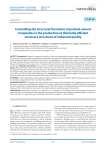
Статья научная
Introduction. Research to improve the quality of foam concrete products through targeted control of technological processes of structure formation of cement-based compositions is relevant. The strength of foam concrete is significantly influenced by the adhesion strength of the hardened cement paste to the aggregate. This article discusses methods of chemical and mechanochemical activation of foam concrete filler with glyoxal-containing additives, interaction with hydration products of binders and increasing the strength of the contact zone. The quality of foam concrete can be improved by controlling the properties of the contact zone. Materials and methods. The study was conducted using standard test procedures specified in national standards. Results. With preliminary chemical and mechano-chemical exposure of the sand surface to glyoxal-containing additives and its subsequent introduction into the foam concrete mixture the grade of strength of foam concrete increases to B1 while maintaining the average density grade D500 in comparison with foam concrete of the control composition, while the shrinkage value decreases by 20–38.5% and thermal conductivity coefficient by 37%. Conclusion. The use of glyoxal-based additives in foam concrete mixtures by pre-activating the sand surface can improve the quality of cement foam concrete.
Бесплатно
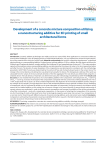
Статья научная
Introduction. Currently, additive technologies are widely used across various fields. Their application in construction addresses several critical challenges. In the 3D printing process of small architectural forms, it is very important to choose the right composition of the materials from which they will be made. Materials and methods. We used for composition development: synthesized aluminosilicates as a nanomodifying additive, Portland cement without additives 52.5N as a binder, fine filler quartz sand from the Ukhtinsky and Chaadaevsky deposits, complex additive Sika Antifreeze N9, and superplasticizers Axton and C-3. The water retention capacity of formulations using a nanomodifying additive was determined by the amount of water in the test composition before and after the tests. The kinetics of water absorption of the compositions was determined in accordance with the methodology presented in GOST 5802. Porosity was determined by the content of free and chemically bound water in the cement stone. The change in the normal density and setting time was determined using the Vic device. The intergranular voidness of the sand was calculated from the values of the true and bulk densities of the fine aggregate. The true density was determined using the Le Chatelier device. The bulk density of materials was determined using the methodology established by GOST 9758. Results and discussion. It was revealed that the presence of a nanomodifying additive in the composition, with a dispersion of Sud = 0.69 m2/g and Sud = 1.03 m2/g, increases the strength of the compositions compared with the control ones (without additives) from 7% to 17.8%, respectively. That is, there is an inverse relationship between the dispersion of the introduced additive and the change in the strength of the samples. The high dispersion value of the introduced additive ensures optimal conditions for the hardening of compounds, which is confirmed by studies on the water absorption of compounds. During the research, the influence of the amount of the studied additive on the setting time of cement, changes in the normal density of cement dough and porosity of cement systems were evaluated. In order to reduce cement consumption and increase the mobility of the mixture composition, a fine filler is introduced – sand with a mixed grain composition. In the process of selecting the composition of the concrete mix for 3D printing of small architectural forms, their technological properties were taken into account. Four compositions of a concrete mix for 3D printing with different amounts of nanostructuring additive, sand, and cement were studied. Conclusion. Compositions with optimal characteristics have been identified for further research in the field of selection and development of concrete mixtures for 3D printing of small architectural forms.
Бесплатно
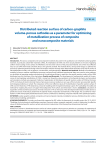
Статья научная
Introduction. The porous composite and nanocomposite materials discussed in this publication are metallized carbon-graphite materials, in particular carbon fiber materials (CFMs). At metallization of CFMs one of the actual problems is the task of applying uniform metal coating on the surface of CFMs fibers over the entire volume of the processed material. One of the most effective ways to coat CFMs with metals and their alloys is the galvanic method. This method allows, among other things, to optimize the process by optimizing both the design of the electrolyzer with flow-through three-dimensional electrodes (FTE) and the choice of electrodeposition modes, such as galvanic, concentration, and hydrodynamic. Materials and methods. Methods of mathematical modeling of porous medium metallization processes and previously published experimental data were used to solve problems on calculation of operating modes and elements of the electrolyzer design, in particular, the specific reaction surface of the UWM distributed over the thickness of the electrolyzer. Results and discussion. The development of mathematical models of the processes of electroplating metallization of CFMs is carried out. Boundary value problems of mathematical physics are formulated and calculation methods are proposed. Problems of optimization of distribution of specific reaction surface of CFMs by thickness of FTE on the basis of electrochemical theory of processes in porous medium are set, ways of their solution are presented. Specific technological problems are solved. The comparison of the most effective values of the distribution of specific reaction surface of CFMs over the thickness of FTE obtained as a result of modeling with the experimental data is given. The workability of models and methods for studying the process of copper electrodeposition from sulfuric acid electrolyte is shown. Conclusion. Calculation of regularities of electrochemical processes of metal extraction in FTE on the basis of the developed mathematical models allows to predict the results of electrolysis, determine the optimal modes of operation and elements of FTE design. The use of FTE for metallization of CFMs with properly distributed reaction surface contributes to obtaining composite materials with specified properties.
Бесплатно
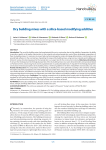
Dry building mixes with a silica-based modifying additive
Статья научная
Introduction. The use of dry building mixes has broad potential for use in construction due to their stability of properties, the ability to provide a specific set of quality characteristics to the material, and reduced production waste. When developing compositions of floor dry building mixes, it is necessary to ensure high mechanical properties, reduce shrinkage deformations, crack formation, and provide high adhesion to the concrete base. Expanding the range of dry building mixes, using local raw materials and modifying additives for various functional purposes for their production is an urgent task for the construction industry. Materials and methods. To ensure the rheological and technological properties of the dry building mixes, low water demand binders were produced based on Portland cement, volcanic slag, fly ash and dry superplasticizer on a polycarboxylate basis. To regulate the technological properties and increase mechanical properties of dry building mixes, a reinforcing additive in the form of basalt fiber and nanosilica was used. Results and discussion. The compositions of self-leveling dry building mixes were optimized according to the criteria for achieving the highest mechanical properties. The water-holding capacity of the mixes, compressive and flexural strength, water absorption, crack width, abrasion, and adhesion strength to the concrete base were determined. The microstructure of the mortar was studied using scanning electron microscopy. An assessment was made of the influence of modifying additives on changes in the properties of flooring dry building mixes. Conclusion. The resulting compositions of dry building mixes comply with the requirements of state standard for self-leveling flooring building mixes. With the use of a complex of mineral, plasticizing, micro-reinforcing, nano-sized additives, high performance indicators of flooring building mixes have been achieved.
Бесплатно
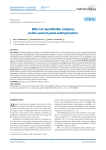
Effect of nanofibrillar cellulose on the cement paste setting kinetics
Статья научная
Introduction. The study addresses the effect of nanofibrillar cellulose (NFC) on the setting process of cement paste during the first hours of gauging. A brief justification of the research topic relevance is given. It has been noted that the modification of cement materials by nanoscale additives has sparked significant scientific and practical interest in recent years. NFC has emerged as one such additive, and the potential impacts of its incorporation into cement systems are currently under active investigation. The study aims at investigating the effect of NFC on the cement paste setting kinetics during the first hours of gauging. Materials and methods. We present the materials used in the research and their characteristics, in particular, two types of cement characterized by the presence or absence of false setting, as well as cement paste compositions with different NFC consumption (from 0 to 0.24% of dry matter by weight of cement). The technique of measuring conditional viscosity in time with a laboratory rheometer and a special measuring system is described. Results. The results of cement paste tests are presented in the form of setting process diagrams. Discussion. The results obtained and experimental data are given. The complex character of NFC influence on the cement paste setting kinetics has been noted, which depends on the cement quality and additive consumption. For cement without signs of false setting, a decrease in setting onset time was observed when increasing the NFC content. Conversely, increase in the amount of NFC leads to an increase in the setting onset time for cements with signs of false setting. Conclusion. NFC has a noticeable effect on cement paste setting kinetics in the first 3 hours: it accelerates the process when using cement without false setting and slows down the setting when using cement with false setting.
Бесплатно
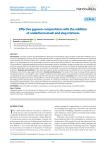
Effective gypsum compositions with the addition of underburned ash and slag mixtures
Статья научная
Introduction. Currently, research and development in the field of nanomaterials science is being conducted worldwide. The rationale for developing innovative energy-saving materials based on gypsum binders for buildings and structures with optimized carbon dioxide (CO2) emissions allows us to consider underburnt ash and slag mixtures as a promising technogenic product that allows us to comprehensively solve technological, economic and environmental problems in the construction industry. The study of the possibility of synthesizing promising mineral compositions based on underburnt products isolated from non-recyclable ash and slag mixtures (ASM) of coal-fired power plants ensures the development of a base of design and engineering solutions for buildings and facilities with rational energy consumption and optimized CO2 emissions using gypsum nanomaterials with unique properties. Materials and methods. In the study, technogenic carbon (underburning) was isolated from ash and slag mixtures by flotation enrichment using reagents (flotators). Results and discussions. The results of the study of energy-efficient gypsum composites based on a technogenic carbon modifier confirm its active participation in the processes of structure formation and crystallization of nanostructured building materials with high-tech characteristics. Conclusion. The research results obtained in the field of developing innovative, energy-efficient, cement-free building materials can contribute to an increase in the level of knowledge and the development of innovative approaches in construction materials science. These findings will be useful for subsequent implementation in the construction industry. The research topic is in line with the implementation of state programs, including the Strategy for Scientific and Technological Development of the Russian Federation.
Бесплатно
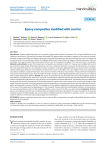
Epoxy composites modified with coal tar
Статья научная
Introduction. Despite significant progress in the creation of high quality polymer composites with a unique combination of key indicators, some issues in this area have not been fully studied. This paper presents the results of research on the structure of materials based on epoxy-coal binder and analysis of physical and mechanical properties at the microstructure level, which are influenced by various factors: the quantitative content of modifying additives and various fillers, the degree of particle dispersion, their size and shape. It has been revealed that nanoscale particles are one of the potential modifiers of the microstructure of composites. Materials and methods. As part of the experiment, composites were studied, in which ED-16 epoxy resin modified with coal tar was used as the main binder. Polyethylene polyamine served as a hardener. Reduction of viscosity and plasticization of compositions was achieved through the use of gasoline, acetone, turpentine, white spirit, dibutylphthalate, etc. Quartz sand, fine powders of brick, marble, glass, limestone, and in addition, Portland cement were used as fillers. Two nano additives were used: carbon black and carbon nanotubes. Standard techniques were used to reveal the mechanical characteristics. Physicochemical investigations were carried out by IR spectroscopy. Tests of samples for fungus resistance and fungicidal properties were carried out in accordance with the State Standard (SS) 9049-91. Results. The results of composite tests are presented in the form of spectrograms, graphical dependencies, and tabular data. Discussion. The results of analyzing the obtained experimental data are presented. The optimum content of polyethylene polyamine for curing of epoxy-coal compositions has been determined. The following has been established: the physical and mechanical properties of composites depend to a great extent on the nature of the solvent, and changes in wide ranges have been recorded. It has been determined that the properties of composite materials are seriously influenced by the dispersity and quantitative content of the filler. The expediency of nano-additives application in epoxy compositions has been revealed. In the course of the experiment the dependences of the change of chemical resistance and biological resistance of composites on the type and quantitative content of the modifying additive, on the nature of the filler were determined. Conclusions. Modified epoxy-coal composites with the use of multilevel fillers and additives have been developed. This makes it possible to increase the strength, increase the deformability and crack resistance of building materials composites for operation, which is very important under the influence of chemical and biological aggressive environment.
Бесплатно
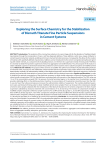
Статья научная
Introduction. The evolution of the construction industry in its current stage calls for the alteration of traditional building materials through the incorporation of nano- and fine-dispersed additives. These additions confer new, unique attributes to cement-based construction materials, enabling control over structure formation processes. Consequently, this allows for the creation of materials with specifically defined characteristics. Additives can be introduced into the cement composite during the joint grinding with clinker minerals, as a component of dry building mixture, or in the form of a suspension instead of mixing water. Therefore, it is essential to obtain fine particles suspensions resistant to aggregation and sedimentation. Thus, the purpose of this study is to obtain stabilized suspensions of bismuth titanate fine particles for cement systems and to study the properties of modified cement stone. Materials and methods. The purpose of this work was to establish the optimal concentration of polycarboxylate plasticizer in industrial water, necessary for the stabilization of fine bismuth titanate suspensions using surface tension and conductometric determination methods, the sedimentation stability of the obtained suspensions and the effect of ultrasonic exposure, as well as the physical and mechanical characteristics of cement stone modified with the obtained suspensions. Results and discussion. In order to establish the optimal concentration of the plasticizer necessary to obtain stable suspensions of bismuth titanate particles, the critical micelle concentration (CMC) for the plasticizer was determined with tap water as the dispersed medium. The CMC value was 1.3 g/l. If the concentration exceeds CMC, the process of micelle formation begins. In the micellar form, the plasticizer no longer provides stabilizing effect on the additive particles, therefore, the concentration of the plasticizer should be lower than the CMC. It was also found that ultrasound exposure increases the sedimentation stability of suspensions. The resulting stabilized suspensions were used instead of mixing water to obtain modified cement stone samples. There is an increase in the compressive strength of cement stone samples obtained after the introduction of fine bismuth titanate into the cement composite in the form of water suspensions stabilized by ultrasonic treatment with concentrations of 10, 30 and 50 g/l. The increase in compressive strength of modified samples compared to reference sample was from 24 to 33 MPa at first day age (by 13, 25 and 38% respectively), and from 80 to 93 MPa at 28 days age (by 4, 9 and 16%). Compressive strength of samples modified with bismuth titanate suspensions after ultrasonication compared to reference sample with plasticizer increased mostly at the first and third days age: from 29 to 42 MPa (by 31, 38 and 45%) and from 53 to 70 MPa (by 28, 30 and 32%) respectively. Conclusion. As a result of the research carried out in this study, the Critical Micelle Concentration (CMC) of a polycarboxylate plasticizer was determined, optimal for stabilizing fine-dispersed additive of bismuth titanate for cement systems, the effectiveness of ultrasonic treatment to achieve sedimentation stability of the obtained suspensions of the additive was confirmed, an increase in the strength characteristics of modified cement stone samples was established both in the initial hardening periods and at 28 days age. The results allow to consider a cement composite with fine bismuth titanate as a basis for obtaining building materials of new generation.
Бесплатно
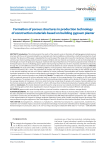
Статья научная
Introduction. This article presents the results of the research works on formation of building gypsum plaster porous structure with the use of recovered anhydrite raw materials and chemical additives, and describes a method for production of wall materials. The relevance of this paper is stipulated by the need to expand the range and increase the manufacture of heat-insulating and structural-heat-insulating products based on gypsum binders and local mineral raw materials, as well as the development of technologies to ensure the production of gypsum materials with improved performance. The authors proposed certain methods for forming the porous structure of building gypsum plaster and improving its performance in terms of porosity and thermal conductivity through the use of modified recovered raw materials and chemical additives of calcium chloride and sodium carbonate. Materials and methods. The study of the effect of modifying additives on the properties of the mixture was carried out using gypsum paste of normal consistency (NC = 55%). The preparation of samples and testing were performed according to the methods specified in the national standards with the use of porous additives of calcium carbonate, fluoroanhydrite and chemical additives for the rheological properties of the mixture, average density and strength of the samples, the patterns and mechanism of the processes of gypsum stone structure formation were established. Results. The application of fluoroanhydrite modified in the disintegrator with an equimolar amount of calcium carbonate leads to a decrease in the average density of the samples to 40% with evenly distributed pores. The analysis of the microstructure of heat-insulating material samples with a density of 550 kg/m3 showed that the average diameter of micropores is 0.45 mm, while the thermal conductivity of samples with complex chemical additives has the thermal conductivity coefficient of 0.25 W/m°C, which is 30% lower than the thermal conductivity of samples without complex additives. Conclusions. The results obtained create the basis for using recovery raw materials and domestic modifying additives as a pore-forming agent, which allow regulating the structure of gypsum stone in order to produce effective wall materials.
Бесплатно
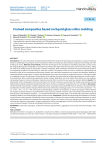
Framed composites based on liquid glass roller molding
Статья научная
Introduction. The work is devoted to the experimental and theoretical study of the technology and properties of composite materials based on soluble glass. The prospects for the manufacture of floor coverings and other products using frame technology and roller molding are shown. Materials and methods. The frame technology for the manufacture of building composites consists in the first stage of gluing grains of large filler to each other according to the shape of the future product, and in the second stage – filling the voids of the hardened porous frame with a solution component. Roller molding is used both when performing the operation of compacting the frame and when filling its voids with a matrix. The purpose of the work was to conduct an experimental and theoretical study of the manufacturing technology, physical and mechanical properties and chemical and biological stability of composites based on liquid glass. To analyze the mechanism of the stress-strain state of compacted mixtures, a rheological model is considered, in which the mechanical characteristics of the medium are determined by fundamental properties: viscosity, elasticity and plasticity. When conducting experimental studies, sodium liquid glass was used, sodium fluorosilicate was the hardener, and powders based on mineral and organic materials served as fillers. Furyl alcohol was used as a polymer additive. Results. The optimization of the compositions of frames and matrices for framed concretes was performed. The studies were carried out using mathematical methods of experiment planning. Three-factor matrices consisting of 10 experiments were considered. Discussion. The best strength characteristics are demonstrated by matrix compositions that include filler mixtures of quartz sand, pyrite cinders and diatomite, and the greatest strength of the framework is achieved by including granules of 5–10 mm in the composition – 7%, 2.5–5 mm – 23%, 1.25–2,5 – 70%. The chemical and biological resistance of composites on silicate and polymer silicate binders was studied. Chemical resistance was determined in water, aqueous solutions of caustic soda, technological environments of soft drink factories, and biological resistance – in a standard environment of mycelial fungi. It was found that composites containing modifying additives are characterized by higher resistance rates. Conclusion. Scientific and technological foundations for managing the structure and properties of liquid glass framed composites of vibration-free roller molding have been developed, as well as scientifically based solutions for improving the compositions of frame and matrix mixtures by regulating the processes of chemical interaction between components, the grain composition of fillers and aggregates, and the introduction of special additives to ensure increased strength, chemical and biological resistance of concrete.
Бесплатно
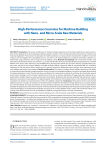
High-Performance Concretes for Machine Building with Nano- and Micro-Scale Raw Materials
Статья научная
Introduction. The unique combination of rheotechnological properties and mechanical performance opens up prospects for the application of self-compacting and high-strength concretes in the manufacturing of base elements for machines and industrial equipment. The processes of adsorption of modern plasticizers on various mineral and polymeric modifiers of concrete mixtures were investigated. The compatibility of nano- and micro-scale mineral additives in composite cementitious binders was determined using calorimetry with an improved semi-adiabatic setup. Materials and methods. The cementitious binders used were CEM 52.5N Portland cement (Asia Cement LLC, Russia) and Nanodur (Germany, Dyckerhoff GmbH); hyperplasticizers included Melflux 1641F, 2651F, 5581F (Germany), PCE TR-6088 (China), Sika ViscoCrete 240 HE Plus and 226-P (Russia); superabsorbent polymer; nano- and micro-scale mineral additives included microsilica MK-85, metacaolin VMK-45, microcalcite MM-315, marshalite Silverbond 15 EW, and ground silica-containing rocks. Selective dissolution, differential thermal analysis, laser granulometry, and semi-adiabatic calorimetry were employed. Results and discussion. The quality of ultrafine mineral additives determines their ability to chemically bind portlandite through pozzolanic activity. Among the investigated additives, microsilica and gaize demonstrated the highest pozzolanic activity. Thermal activation was effective for components consisting of crystalline silica (marshalite, ground quartz sand), resulting in a 25% increase in performance. There was no selective adsorption of hyper plasticizer molecules by superabsorbent modifiers based on sodium polyacrylate compositions. Metakaolin and tremolite exhibited high adsorption to hyper plasticizers among the mineral additives. The rapid evaluation of the influence of formulation factors on the setting of cementitious composites was tested on an improved version of the semi-adiabatic calorimeter. Conclusions. The presence of micro-scale mineral additives based on microsilica in composite cementitious binders enables the development of high-performance concretes adapted for machine building. The study of pozzolanic activity, adsorption capacity, and cumulative heat release curves has indicated the feasibility of replacing microsilica with metacaolin and the potential for its partial blending with finely ground natural gaize. Analysis of the thermal effects accompanying the hydration processes of the "cement-additive-water" system with calorimeters allows us to provide more efficient research on the compatibility of additives in high-performance concrete compositions.
Бесплатно
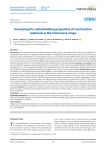
Increasing the radioshielding properties of construction materials in the microwave range
Статья научная
Introduction. The intensive development of technology in the modern world is accompanied by the origin of new types of manmade hazards, one of which is microwave radiation. Despite the considerable range of protective materials, not all of them are suitable for construction purposes. The main obstacle to their use is their high cost, and integrating them into the main types of wall construction materials would require significant changes to their production processes. The most practical and reasonable way to solve the issue is to introduce special additives into concretes and mortars traditionally used for the production of building products. The paper examines the effect of additives of fine-dispersed black carbon and aluminum powder in the composition of cement and gypsum matrices on radio shielding properties in the frequency range 1800–2800 MHz. Materials and methods. Black carbon powder was added to cement and gypsum paste in dosages of 0, 2.5, 5%, aluminum powder was added to gypsum paste in dosages of 0, 2.5, 5%. Superabsorbent polymers pre-saturated with water have been studied. Radio shielding properties have been studied on a designed experimental laboratory installation using a vector circuit analyzer NanoVNA. Results and discussion. The influence of black carbon and aluminum powder additives on the strength and microwave protective properties of gypsum and cement stone is considered. It is found that the addition of black carbon in an amount of up to 3–3.5% of the cement weight shows a neutral effect on the strength of cement stone, providing a decrease in the signal level of about 50% (–6 dB) observed in the ranges 1800–2100 MHz and 2300–2650 MHz, which makes this additive promising for solving the highlighted task. When additives are introduced into the gypsum matrix, the addition of black carbon reduces the radiation level to 60% (–8 dB), and aluminum powder to 69% (–10 dB) in a dosage of no more than 5% of the mass fraction of the binder on samples with a thickness of 3 cm. However, the additives considered have a noticeable negative effect on the strength characteristics of gypsum stone, which allows recommending the use of only black carbon in an amount of no more than 2.5% to obtain products that do not require high strength. Conclusion. The problems of creating construction materials to reduce the level of microwave radiation in the studied frequency range are outlined. Data have been obtained on increasing the shielding ability of cement and gypsum binders with the use of additives.
Бесплатно
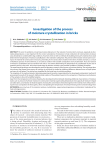
Investigation of the process of moisture crystallization in bricks
Статья научная
To solve the problems concerning moisture behaviour in the material of construction’s enclosure, especially at alternating temperatures, is very important for the correct calculations of resistance to heat conduction of construction’s enclosure and, ultimately, for comfortable living conditions. However, there are still no methods for building enclosure’s materials that could determine the temperature of moisture crystallization in the material in solid phase. The premise of the research is that water incoming to the material of construction’s enclosure, presenting in the construction’s material in the form of oxides and salts, as a result of hydrolysis process of some elements, is an eutectic solution with unstable composition and concentration. Thus, the research of moisture crystallization process transfers from micro- area (when determining the temperature of crystallization by the size of material’s pores) to the nano- area when researching the eutectic solution at the possible condition of hydrates formation. The experimental technique was developed to perform laboratory research of the process of moisture freezing. The technique takes into account that freeze-thaw process of moisture in solid body is studied at significant difference between mass of liquid phase and mass of solid phase. The method was simplified for the broad use at working conditions. The simplicity of the method aimed at obtaining experimental resultsis compensated by the developed mathematical method of processing the results of the research. Mathematical solution of the problem based on the comparison of freezing curves behaviour of the samples in dry and humidified samples. Apart from the temperature of moisture freezing, the developed method allowed obtaining additional characteristics of moisture states, such as amount of unfrozen moisture in construction’s material, supercooling temperature, heat capacity of moisture in liquid and solid states, concentration of dissolved agents. Knowing the concentration of dissolved agents in the material, even without knowing the exact composition of these agents, allows manipulating the temperature of moisture freezing at the nanotechnology level.
Бесплатно
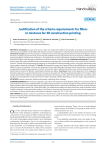
Justification of the criteria requirements for fillers in mixtures for 3D construction printing
Статья научная
Introduction. As part of the task to create new materials for additive technologies, an analysis of the situation was carried out, and a problem was identified with the lack of common approaches to selecting raw material components for mixtures. Theoretical concept. Based on the approaches of fundamental structure rheology, physicochemical mechanics of disperse systems, the theory of packing of granular media, we theoretically justified the criteria requirements for the characteristics of fillers and suggested quantitative criteria for their evaluation. It was proposed to use these quantitative criteria for a preliminary comprehensive assessment of fillers when designing compositions of mixtures for 3D construction printing. Materials and methods. The characteristics of the fillers were evaluated using scanning electron microscopy with a scanning electron microscope Thermo Scientific™ Phenom™ Desktop SEM and processing of images by the ParticleMetric software package as well as using laser granulometry with a laser analyser of particles Analysette 22. Results. We assessed the cement and 5 types of fillers that had different sizes and played different roles in the formation of the mixture properties. We also identified their estimated criterial characteristics, including the average particle diameter, gra-nulometric constant, and particle shape coefficient. Boundary values of these characteristics were determined for particles of different morphology and dispersion degree. Conclusion. Based on the application of the suggested theoretical approaches, we determined the lines of research associated with obtaining experimental patterns of the impact of the criterial characteristics of fillers on the rheological characteristics of mixtures as well as with these characteristics according to their significance and justifying the requirements for the range of quantities of fillers depending on their size, shape, and granulometry.
Бесплатно

Lime-diatomic mortar for finishing the walls of buildings
Статья научная
Introduction. At present, when performing finishing and restoration work, more and more preference is given to dry lime mixes (DBM). Wide opportunities for the production of dry lime-cement mixes are opened up by the use of diatomite, which is both a dry mix filler and an active mineral additive. Previous studies have confirmed the effectiveness of heat treatment of diatomite. After firing at 600–800оC, activity increases when interacting with calcium oxide hydrate. This is explained by the fact that at 600–800оC clay substances are dehydrated to metakaolinite, which is characterized by increased reactivity. The properties of dry mixtures and compositions based on them are affected by the particle size of the components of the dry mixture. In this regard, it is of great importance to study the influence of the dispersion of the components of the dry mixture on the formation of the structure of the finishing compositions. Materials and methods. To study the active centers of the diatomite surface, we used the indicator method for determining the distribution of adsorption centers. Determination of the compressive strength was carried out on a DOSM-3-1 dynamometer on samples 3x3x3 cm in size at the age of 28 days of air-dry hardening of the compositions. The determination of the granulometric composition of the components of the dry mixture was carried out by the method of sedimentation analysis. Adsorption was estimated from the optical density measured with a PEC photoelectrocalorimeter. To study adsorption at the “liquid-solid” interface, the initial components of the dry mixture, lime and diatomite, were used. Results and discussions. Accordingto the data obtained, it was found that a particle size reduction of the dry mixture filler leads to an increase in the strength characteristics of lime-diatomite compositions.It was found that the introduction of C-3 additive into the water favorsincreasing dispersion of hydrated lime, improving plasticity finishing mixture and improving the physical and mechanical characteristics lime-diatomaceous compositions.It is proposed to introduce sulfate additiveinto the formulation of the aluminumdry mixture. Increase in the compressive strength of the finishing composition with addition of aluminum sulfate 1.5–2 times was observed. Conclusion. It has been determined that the developed dry mixture is highly competitive, in terms of technological and operational properties,withprototype. Moreover, the production of the proposed DBM is more economical due to the use of local raw materials and domestic additives.
Бесплатно

